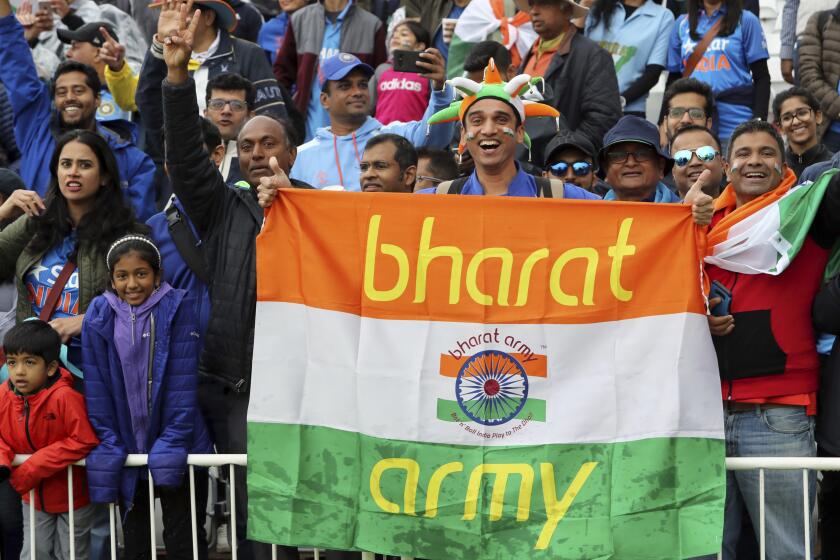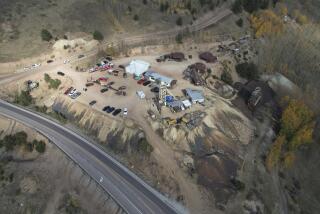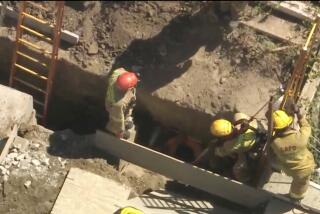Rescuers pull out all 41 workers trapped for 17 days in a tunnel in India
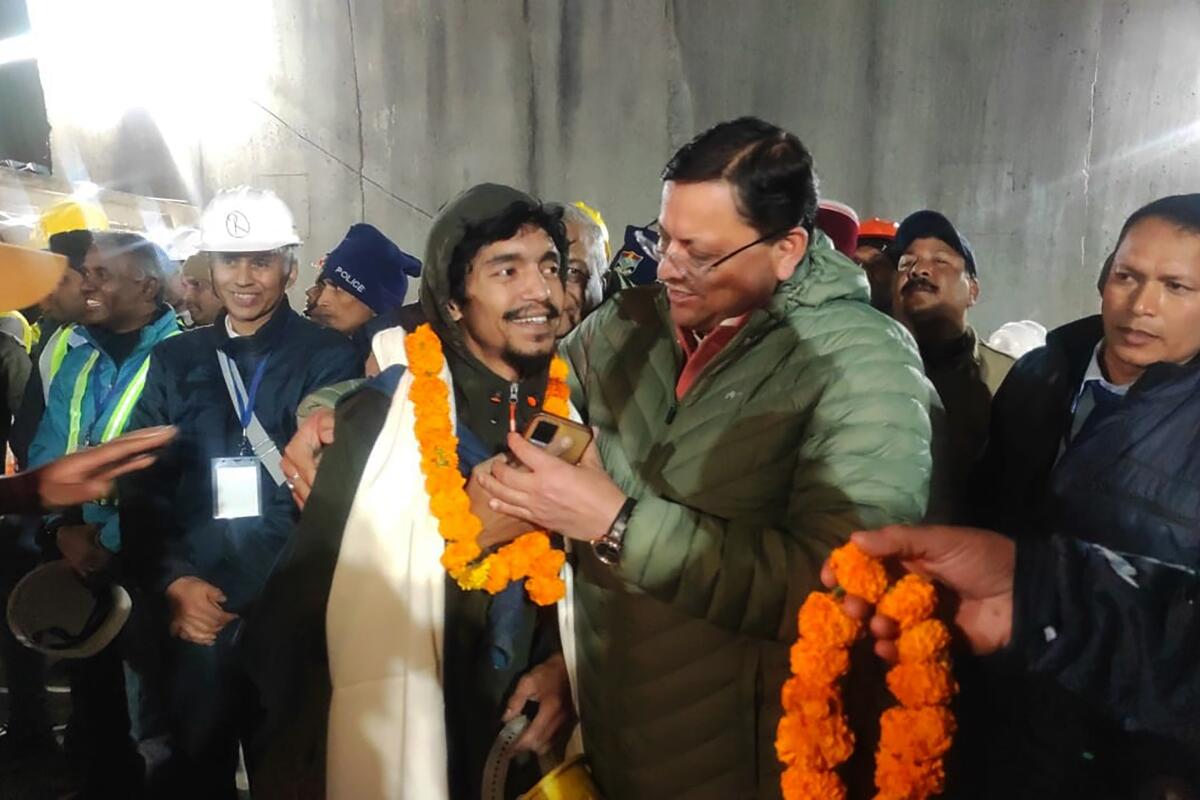
- Share via
UTTARKASHI, India — India’s transportation minister said Tuesday that all 41 construction workers who were trapped in a collapsed mountain tunnel in the country’s north for more than two weeks have been pulled out after rescuers reached them earlier in the day.
Nitin Gadkari, the minister of road transport and highways, said he was “completely relieved and happy” after the workers were rescued from the Silkyara Tunnel in Uttarkashi after an ordeal that lasted 17 days.
“I am very happy that all the 41 trapped workers have come out and their lives have been saved,” Gadkari said in a video message posted on X, formerly Twitter. He added that “this was a well-coordinated effort by multiple agencies, marking one of the most significant rescue operations in recent years.”
The workers were pulled out through a passage made of welded pipes that rescuers previously pushed through dirt and rocks. The freed workers were to go through initial health checkups at a temporary medical camp set up inside the nearly 43-foot-wide tunnel.
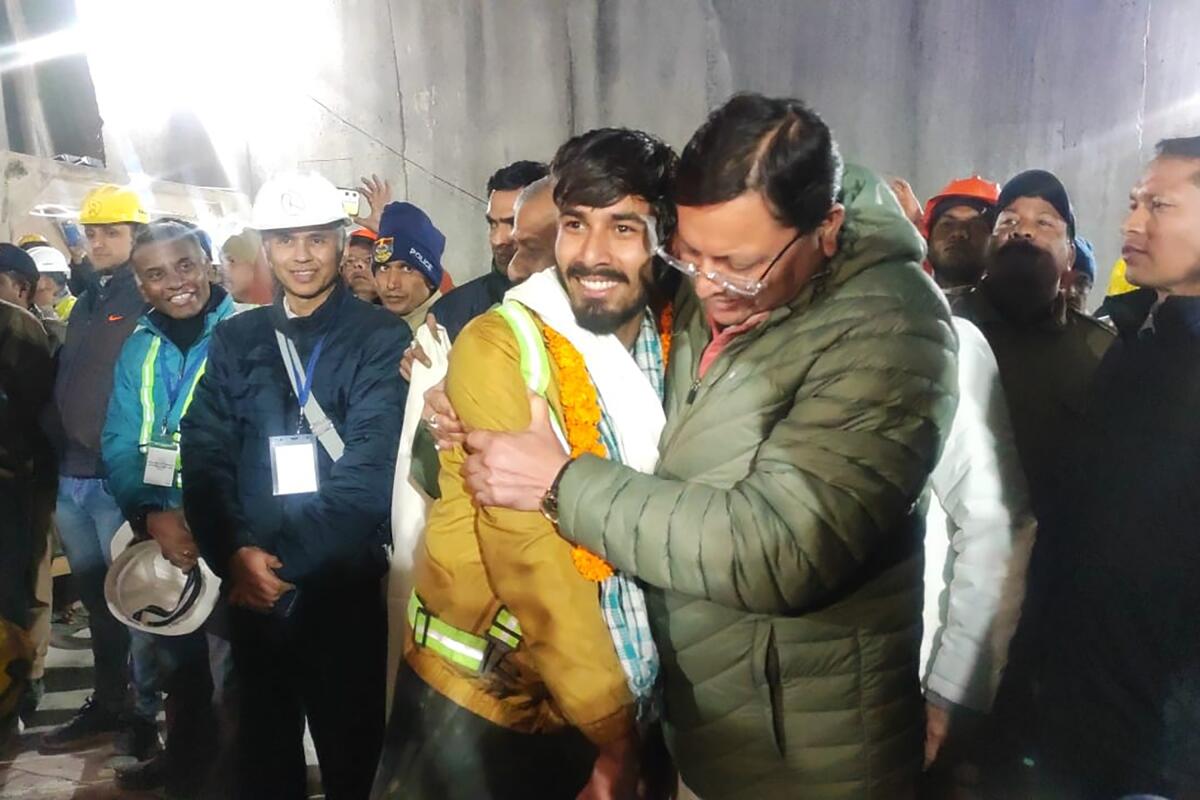
After the first worker was pulled out, Pushkar Singh Dhami, the top elected official in Uttarakhand state, presented the rescued man with a garland and hung it around his neck as rescuers, other officials and relatives cheered.
A crowd of locals shouted slogans of “Bharat Mata ki Jai!” or “Long live Mother India!” and set off firecrackers.
One of the rescuers, who gave only his first name, Devender, told the New Delhi Television channel that “the trapped workers were overjoyed when they spotted us in the tunnel. Some rushed toward me and hugged me.”
State-issued invitations sent to guests of this week’s G-20 meeting in New Delhi referred to India as ‘Bharat,’ sparking rumors of a national rebrand.
The massive rescue mission has riveted the country since the workers were trapped Nov. 12, after a landslide caused a portion of the 2.8-mile-long tunnel they were building in Uttarakhand to collapse about 650 feet from the entrance.
The trapped workers survived on food and oxygen supplied through narrow steel pipes.
Kirti Panwar, a state government spokesperson, said about a dozen men had worked overnight to manually dig through rocks and debris, taking turns with hand-held drilling tools and clearing out the muck in what he said was the final stretch of the rescue operation.
Rescuers resorted to manual digging after a drilling machine broke down Friday while boring horizontally from the front because of Uttarakhand’s mountainous terrain. The machine bored through nearly 154 feet out of the estimated 187-196 feet needed to reach the workers, before rescuers started to work by hand to create a passageway to evacuate the men.
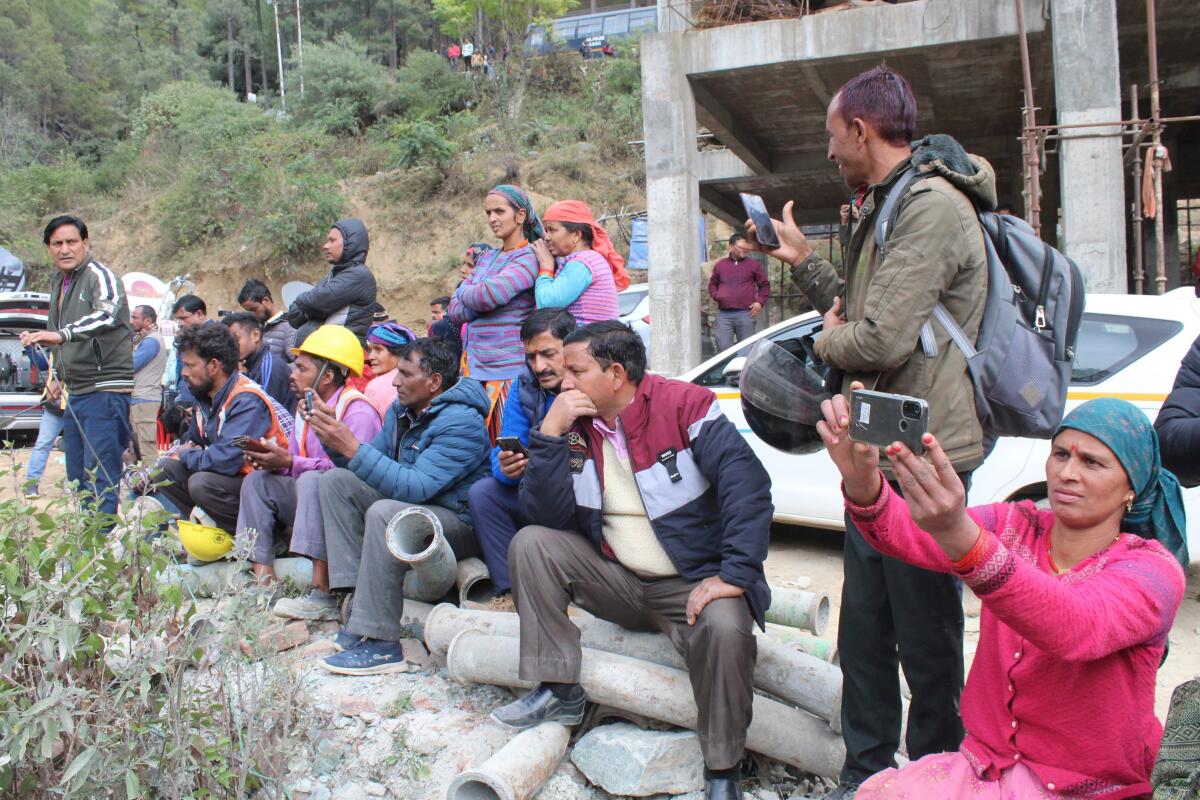
By Tuesday, they had drilled through more than 190 feet. As dusk fell, families of those trapped underground gathered near the site of the accident, anxiously waiting to see their loved ones emerge from the tunnel.
Among them was Jaimal Singh, who said he was hopeful he would soon see his brother Gabbar. “Even nature looks cheerful today. ... The weather is good. Let’s hope this ends soon,” he told the Press Trust of India news agency.
Rescue teams had inserted pipes into dug-out areas and welded them together so the workers could be brought out on wheeled stretchers. On Sunday, rescuers also began to create a vertical channel with a newly replaced drilling machine as a contingency plan.
As what began as a rescue mission that was expected to take a few days dragged on, officials were hesitant to give a timeline for when it might be completed.
Breaking News
Get breaking news, investigations, analysis and more signature journalism from the Los Angeles Times in your inbox.
You may occasionally receive promotional content from the Los Angeles Times.
“I just feel good,” Arnold Dix, an international tunneling expert helping with the rescue, told reporters at the site earlier Tuesday. The drilling on top of the mountain is coming along perfectly, in the tunnel, it’s coming along very well. I have never said, ‘I feel good,’ before.”
Most of the trapped workers are migrant laborers from across India. Many of their families have traveled to the site, camping out for days to get updates on the rescue effort and in hopes of seeing their relatives soon.
Authorities supplied the trapped workers with hot meals through a 6-inch pipe after days of their surviving only on dry food sent through a narrower pipe. They were getting oxygen through a separate pipe, and more than a dozen doctors, including psychiatrists, have been at the site monitoring their health.
The tunnel the workers were building was designed as part of the Chardham all-weather road, which will connect various Hindu pilgrimage sites. Some experts say the project, a flagship initiative of the federal government, will exacerbate fragile conditions in the upper Himalayas, where several towns are built atop landslide debris.
Large numbers of pilgrims and tourists visit Uttarakhand’s many Hindu temples, with the number increasing over the years because of the continued construction of buildings and roads.
More to Read
Sign up for Essential California
The most important California stories and recommendations in your inbox every morning.
You may occasionally receive promotional content from the Los Angeles Times.
